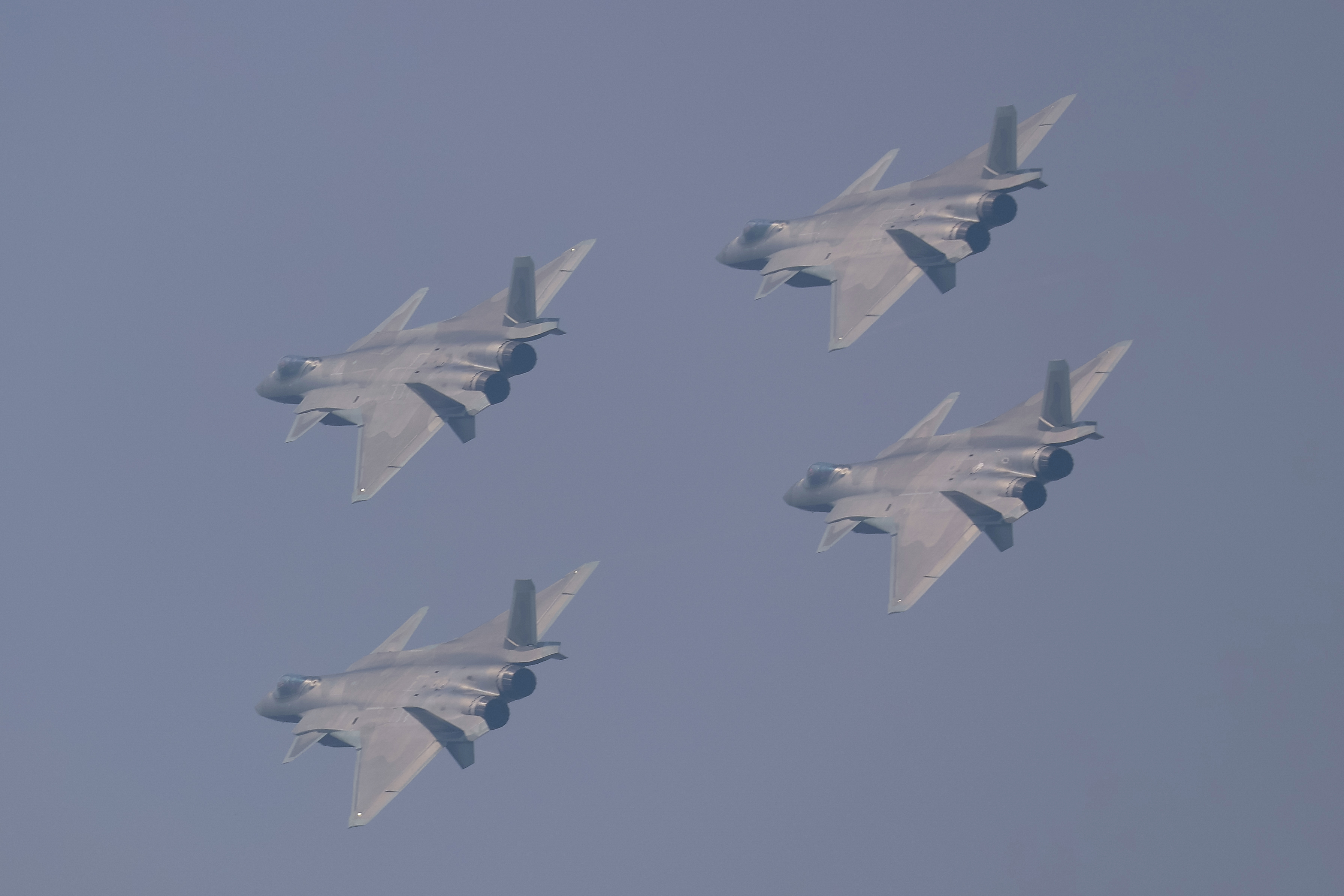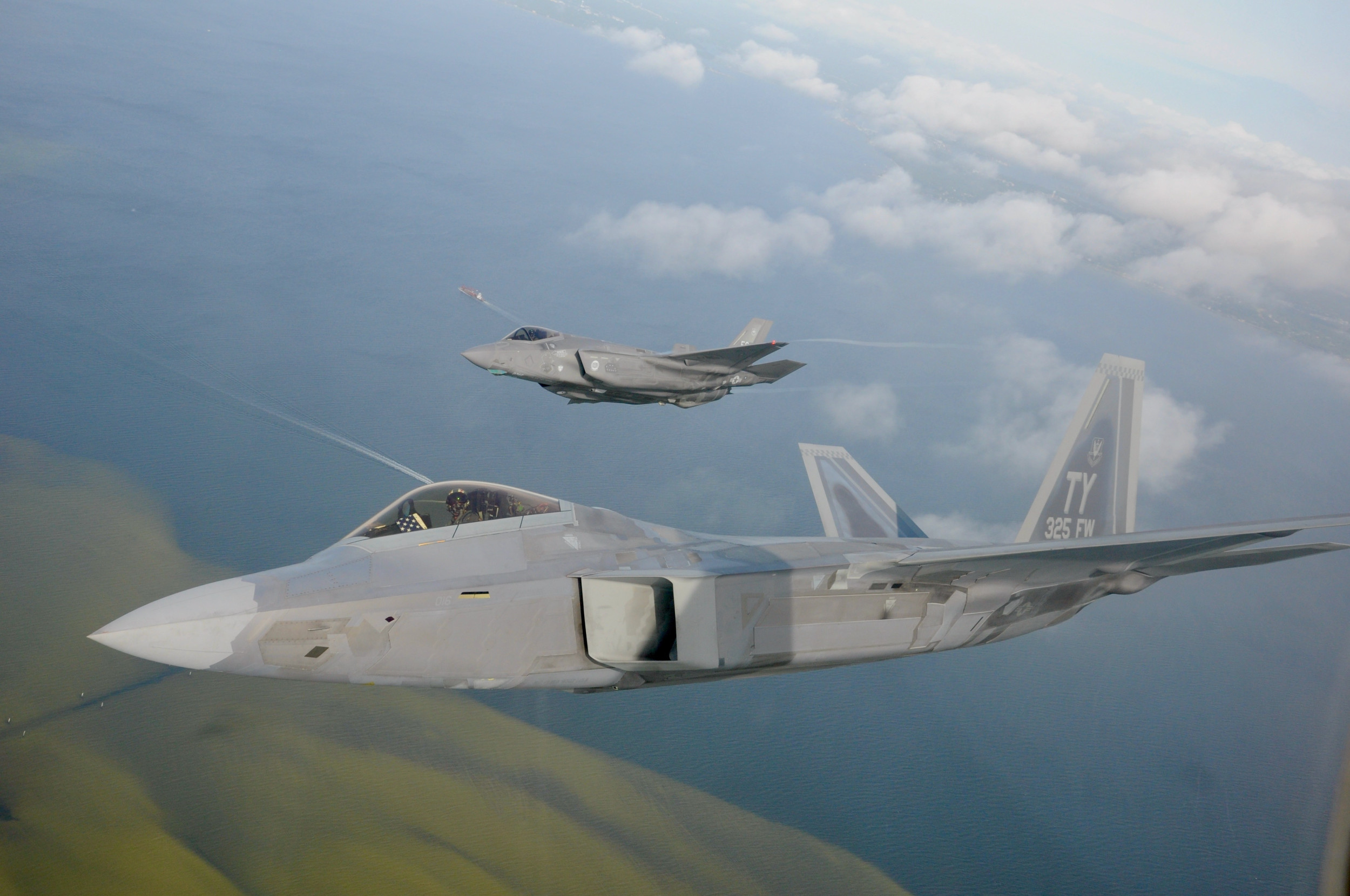What Is 'Next-Generation' Fighter Aircraft in US-China Air Power Race?
.
The Chinese Defense Ministry has been asked for comment.
Why It Matters
Operates one type of fifth-generation fighter jet, the J-20, which is its most sophisticated combat aircraft to date.
The development of the Next Generation Air Dominance fighter jet is ongoing, with this aircraft designed to eventually replace the F-22, a stealthy fifth-generation fighter that began serving in the early 2000s.
The B-21, being described by its producer, Northrop Grumman, as "the world's first sixth-generation aircraft to fly," boasts additional state-of-the-art technology.
What To Know

The definition of a six-gen fighter is somewhat vague, regardless of where you are," said Clayton Swope, the deputy director of the Aerospace Security Project and a senior fellow in the Defense and Security Department at the Center for Strategic and International Studies.
The US and China are developing sixth-generation fighter jets that aim to surpass their predecessor fifth-generation models, the F-22 and J-20. "They will likely boast notably advanced stealth capabilities, networking technology, computing power, sensing systems, and engines compared to their fifth-generation counterparts."
David Cenciotti, editor of The Aviationist, notes that there's no worldwide agreement on the criteria for labeling a fighter jet as a new generation, and even within Western countries, there's no consensus, so it's more accurate to simply call future aircraft the "next-generation" rather than referring to specific generational classifications.
The next-generation fighter jet will have various design features, according to Cenciotti, including the ability to be piloted, controlled by a remote operator, or controlled autonomously by artificial intelligence, plus advanced stealth capabilities to render it largely undetectable.
According to aerospace expert Bill Sweetman, who has years of experience in the industry, the next reasonable next step for military combat planes would be to increase their stealth capabilities, making them nearly invisible to radar from all angles: the front, sides, and back. However, achieving this combination of features - including the ability to fly at supersonic speeds and perform complex maneuvers - is technically challenging, and the resulting aircraft would likely be large, heavy, and expensive to build and operate.
According to Kitsch Liao, associate director of the Atlantic Council's Global China Hub, China uses a classification system for fighter jets that varies slightly from the systems used by the West and Russia, even though there's no widely accepted standard for such classification.
China essentially bypassed the traditional Western third generation of stealth fighter technology due to its ideological split with the Soviet Union during the Cold War, according to Liao, resulting in the tech advancements leaping forward. The J-20 was initially considered a fourth-generation aircraft, which, in reality, is comparable in capabilities to the F-22.
At the same time, China is working on a number of fighter jet designs at a fast pace, taking a different approach than the more cohesive and construction-focused path pursued by the West. "However, regardless of which path is taken, comparing different eras or generations is a somewhat compromising approach," Liao explained.
What People Are Saying

Experts believe that the two advanced airplanes observed in China in December may be prototypes for next-generation jets, which would be classified as sixth-generation, featuring state-of-the-art designs.
I wanted to highlight a concern about the term 'generation' because as time passes, the boundaries between successive generations of technology appear to be blurring. If this terminology continues, it will only become more difficult to distinguish between them in the future.
Regarding 6th gen firewalls, the clear definition is fuzzy, with terms like AI being improperly tossed around to make a statement.
Generations of technology are often misunderstood and misused. The concept wasn't widely discussed before the 1990s, but the Russians were one of the first to genuinely adopt and implement it. However, the term "fifth-generation" was adopted by Lockheed Martin as a marketing ploy, primarily to make it seem like aircraft like the F-22 and F-35 were revolutionary, thereby downplaying any new developments in other areas.
What Happens Next
Only time will tell which country, the United States or China, will finish developing its next-generation fighter jet first and get it into military use. Both countries will probably speed up their fighter jet development projects in the upcoming year as part of the ongoing competition between them.
Related Articles
- First Human Death Due to Bird Flu Confirmed in Louisiana
- Donald Trump Jr.'s Greenland Trip Amid Annexation Hints: What You Need to Know
- Donald Trump Accuses Justin Trudeau of Being Affected by Trump's Canadian Travel Restrictions
-
Twenty-five years ago, 58 year old Nancy Warren-Shingleton didn't know her husband Kenneth would be a blessing to her and her family in years to come. Born and raised in the United States, Warren-Shingleton met her husband in Australia when he was in the U.S. Army. You see, the marriage was meant to be short however it ended up going wonderfully past all their expectations.
Here are five things that make her grateful:
1. Kenneth converted to Christianity which not only did Kenneth continue following he also pursued Nancy and shared it as she did become a Christian also, changing their lives where God is now the missing piece of their life we were missing.
2. He stands strong by her and is unafraid to speak truth & to tell her her flaws so she can correct them and grow in life & become stronger and she's also done the same for him. Feedback leads to knowledge that can change a man and help avoid problems.
3. Kenneth also has great communication skills an attribute she knows a lot of men are lacking which is a rarity you feel in men. He heard her & understood where it hurt so bad but also have allowed me to live my truth there's no one in this world I'd rather have.
Post a Comment for "What Is 'Next-Generation' Fighter Aircraft in US-China Air Power Race?"